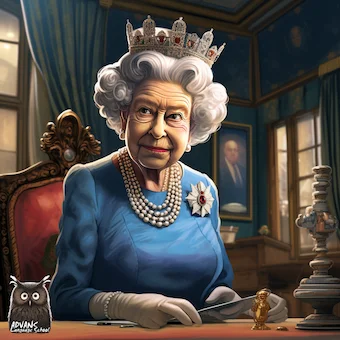On June 2, 1953, the world bore witness to a majestic spectacle that captivated hearts and minds—the coronation of Queen Elizabeth II at Westminster Abbey. This grand event marked not only the beginning of a remarkable reign but also symbolized the enduring continuity of the British monarchy in the post-war era. Let us step back in time and immerse ourselves in the pageantry, tradition, and significance of this historic occasion.
The anticipation leading up to the coronation was palpable. In the aftermath of World War II, Britain was undergoing a period of recovery and transformation. Against this backdrop, the ascension of a young and charismatic queen brought hope, stability, and a sense of renewal to a nation in need of inspiration.
As the sun rose on that momentous day, thousands lined the streets of London, and millions tuned in across the globe to witness the proceedings. Westminster Abbey, steeped in history and tradition, became the sacred stage for the ceremony, where the ancient rituals of monarchy intertwined with the modern aspirations of a nation.
The coronation was a meticulously choreographed affair, with every detail meticulously planned and executed. From the elaborate regalia and crown jewels to the resplendent robes and the reverent presence of religious leaders, the splendor of the occasion left an indelible impression on all who beheld it.
Amidst the opulent setting, Queen Elizabeth II, regal and composed, took her oath before God and the nation. The archbishop anointed her with holy oil, symbolizing the divine authority bestowed upon her as the sovereign. The crown, with its centuries-old symbolism of power and responsibility, was placed upon her head, marking her official reign.
The coronation ceremony was a symbolic affirmation of the continuity and endurance of the British monarchy. It echoed the coronations of monarchs past, evoking a sense of tradition and historical significance that resonated deeply with the British people. In a world still reeling from the aftermath of war, the coronation represented a beacon of stability, a testament to the enduring strength and unity of the nation.
Beyond its national significance, the coronation of Queen Elizabeth II carried profound international implications. As a young queen ascending the throne, she became a symbol of hope and progress, not just for the United Kingdom, but also for the Commonwealth and the world at large. Her reign would witness the transformation of the British Empire into the modern Commonwealth of Nations, embracing a diverse array of cultures, peoples, and nations united by a shared heritage.
In the years that followed, Queen Elizabeth II would navigate the ever-changing landscape of the modern world with grace, poise, and unwavering dedication to her role as monarch. Her reign has witnessed significant social, cultural, and technological changes, and she has consistently adapted to meet the evolving needs and expectations of her people.
The coronation of Queen Elizabeth II stands as a defining moment in British history—an event that encapsulates the majesty of monarchy, the resilience of a nation, and the promise of a bright and prosperous future. It symbolised the continuity of a revered institution while embracing the spirit of progress and adaptation.
As we reflect on this historic occasion, let remind ourselves what an incredible woman Her Majesty was. She was Queen of the United Kingdom and other Commonwealth realms until her death in 2022. She was queen regnant of 32 sovereign states during her lifetime and remained the monarch of 15 realms by the time of her death. Her reign of over 70 years is the longest of any British monarch and the longest verified reign of any female head of state in history.

